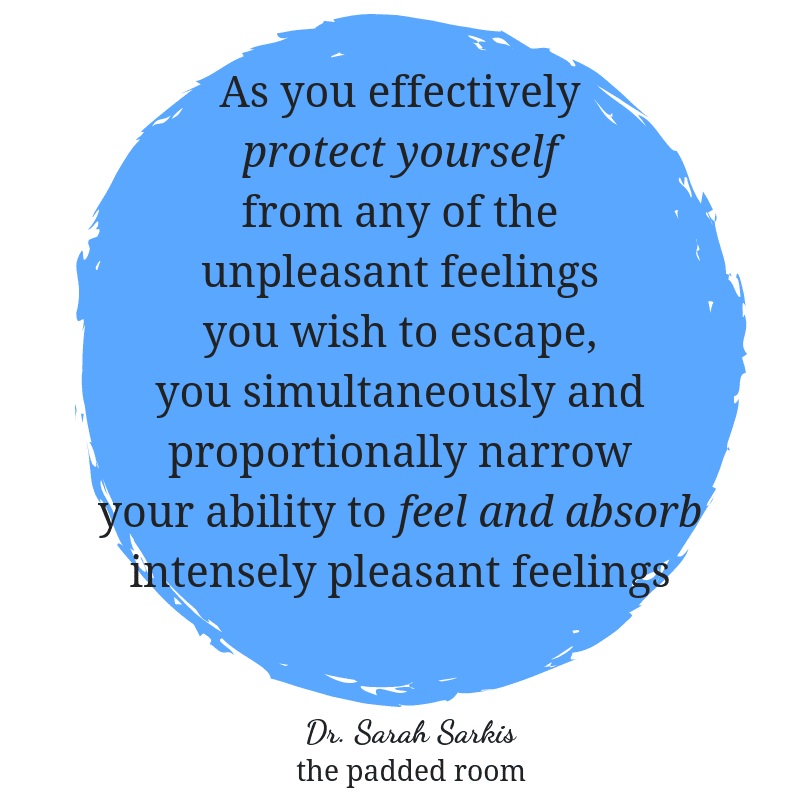Have you read the fine print on the contracts you have signed with avoidance and anxiety, inked in the suffering and pain of your dis-ease.
“What contract? What fine-print,” you ask?
These are terms and conditions of the behaviors and patterns you participate in within your own self. We accumulate these patterns over decades and decades of acting and reacting to our world in certain fixed patterns. What I see coming in and out of my office these days are people who are entirely unaware of most of their emotional contracts. They are not aware of what they are not aware of. And teeny tiny all the way at the bottom of these emotional contracts, is the fine print. The fine print is always unconscious, it lies past your emotional sight-line because it is the fine print. It’s surreptitious by design. That’s how the unconscious works.
Chronic reliance on avoidance almost never yields positive results. Of all the ways we try and control and minimize our experience of pain, vulnerability, conflict, etc. in our life, avoidance holds a special place in the pantheon of choices with the least emotional ROI (return on investment). And yet, it is one of the most common defense strategies I see in my office.
Avoidance operates paradoxically. One side of the coin, avoidance is highly effective in reducing or discharging the feeling(s) you don’t want to feel. The mere act of avoiding the uncomfortable feeling or situation results in immediate reduction in the discomfort. That’s why I refer to it as effective. Initially, it works. But the half-life (how long it works) is quickly metabolized before you need to engage in more avoidant behavior to get distance or relief from the emotions you seek to minimize.
But don’t mistake effective for adaptive. Flip that same coin over and avoidance is a crippling style of coping. Left unchecked it usually results in significant emotional and interpersonal limitations. People who regularly court avoidance begin a love affair with a fickle mistress, moody and volatile in response to the smallest of provocations.
So, let’s make the fine print on avoidance bolder, shall we?
First, avoidance debilitates. In order to maintain distance from the feelings you are trying to avoid, you have to engage in more and more avoidant behaviors. This is how compartmentalization comes into play in the anxious process and how, in the most extreme expression of avoidance you see people struggling with overt phobias. Like the aperture on a camera lens the scope narrows proportionally on the left and right as it closes in on a more myopic view, avoidance follows the same philosophy when it comes to managing your feelings.
As you effectively protect yourself from any of the unpleasant feelings you wish to escape, you simultaneously and proportionally narrow your ability to feel and absorb intensely pleasant feelings. That’s just the price of employing this defense mechanism. Over time, you will feel less discomfort, I suppose, but you will also feel less love, less bliss, less deeply connected to the people in your life. The aperture closes proportionally until you are left with a narrow and often myopic emotional scope. By the time people find their way to my office, unless they are in an acute episode of anxiety, where his/her feelings are wildly unbalanced from a regulatory standpoint, they often can’t feel much at all. At best, you will be comfortably numb.

This brings us to our second fine print item: The more you narrow your emotional aperture to accommodate the avoidance, the more you participate in atrophying your ability to tolerate your feelings in general. The ability to tolerate feelings is a muscle, it’s an achievement that starts with an intricate and delicate dance between infant and caregivers and continues throughout our lives as we adapt and readapt to our changing environments. This bears repeating: The ability to tolerate your feelings is a muscle and like all muscles it requires exercise in order to develop over time, in this case it develops over a lifetime, literally, or it withers and atrophies over the span of our development. The more you exercise your emotional muscle(s), the stronger you get. The more you avoid your feelings, the more the muscle atrophies and the harder it is to tolerate any sense of emotional discomfort or un-ease. For the people I work with, this is a slow evolution, over decades, of narrowing and cropping their emotional aperture to serve his/her ever-shrinking capacity to feel much at all, except for anxiety. In the beginning, the use of avoidance provides a temporary and fleeting sense of relief. But over time, its effectiveness wears thin, unless more and more restrictive and avoidant behavior is implemented. By the time I start working with people with chronic avoidance, they have two states of experience: comfortably numb (close cousin to ignorantly blissful) or anxious.
Finally, the third fine print item: The longer you engage in this type of avoidance (or any behavior that serves to keep you dis-connected from your feelings or “dis-integrated” to use the neurobiological term), the more disconnected your mind, body and brain become. The mind/body/brain connection is no longer something cordoned off to those “new age” thinkers. Hard science has joined the discussion and we now know that the Enteric Nervous (ENS) System is the physical seat of the mind/body union.
Our physical sensations and our feelings are the only language our body has to communicate with our mind and brain. Physical sensations were the first, and most ancient and intimate language we mastered in infancy and early childhood. Long before verbal communication was even a neurobiological option, we had our feelings and from an instinctual standpoint this allowed us to cry and initiate help (in the form of connection) from our caregivers.
As you begin to narrow that aperture to better suit your preferred emotional needs, you likewise atrophy the dialogue you have with your body. The feelings don’t go away, they are there waiting to be engaged, and they will continue to increase in intensity until they are “heard.” For some, this means the onset of panic attacks, intrusive thoughts, and phobic behavior. I want you to notice how your symptoms increased incrementally over a span of years. That’s not a coincidence. It’s directly reflects and is proportional to the degree of mind/body dis-connection or dis-integration you have within your neurobiologcal world.
I’ve used this example of avoidance to anchor the discussion about the fine print on our emotional contracts, but please know that it’s applicable to all of the behavioral and emotional patterns that decorate our interior world. Start to observe all of your emotional contracts and begin a process of self-reflection where you can start to notice the fine print. Remember the fine print is always unconscious.
Most of us have not stopped long enough to even understand the cost benefit analysis of continuing to engage in the behaviors and patterns that give rhythms and routine and cadence to our personality and character—that’s the fine print on the contracts. We operate on autopilot, following the well-worn paths created by the force of habituation and consistency—often to crippling effects on our emotional, mental, physical, and spiritual well-being.
I encourage you to think about your interior world, your own relationship with yourself, as an investment. Like all the investments in your life you have to reflect on the emotional ROI to your current behavioral and emotional patterns.
How’s this working out for you?
Is it worth the cost?
Is it yielding more or less return than it has in the past?
How is it impacting your own relationship with yourself?
How about with others? How’s the quality of your connections in life?
These are important question for you to consider as you continue this process of deep self-observation.
Remember, this is an inside job.
This is you against you.
It’s not someone else’s fault.
It’s not someone else’s responsibility.
There is no magic pill.
It’s not going to just go away.
You are going to have to tolerate discomfort.
Stop waiting for it to “feel” right; it’s not going to.
You are going to have to do this white knuckled and riddled with doubt.
No challenge, no change. That’s how this works.
Comfort is the jailer of progress.
Any person, program, book, or course that promises you growth or change without hard work, and yes, suffering too, is selling you a bunch of bullshit.
Buyers beware.
There, I said it.
So, what’s your take away?
1.) Begin or continue to create space for a practice of self-observation/mindfulness/stillness/meditation…call it whatever you want. But please honor it. Daily. Twenty minutes. Break it up. Do it all at once. No matter. But do it.
2.) If you enjoy topics like this one, please sign up for my monthly-ish newsletter and get essays, podcasts, and more delivered right to your inbox.
3.) Pass this on if you found it to be helpful. You, the readers, are the extent of my marketing “department.”
Stay tuned – next time as we unpack the old adage “You can’t teach old dogs, new tricks.” Here’s a teaser: That’s complete bullshit.






Brilliantly explained (as always) giving me much to contemplate and consciously DO. Thank you.